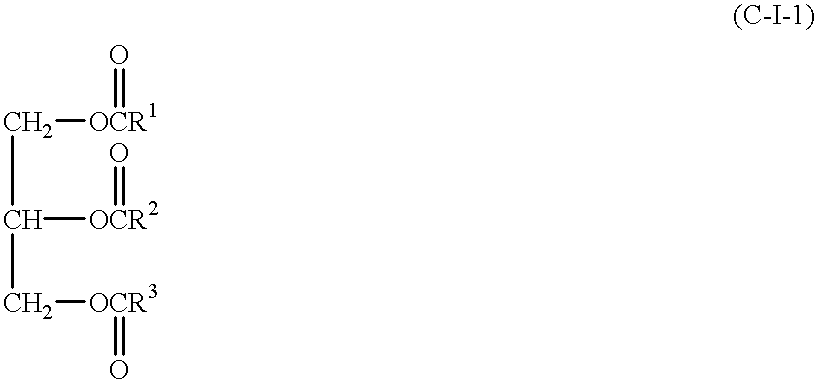Emulsified water-blended fuel compositions
a fuel composition and water-blended technology, applied in the petroleum industry, fuels, liquid carbonaceous fuels, etc., can solve the problems of high hardware cost and historically difficult emulsion stability
- Summary
- Abstract
- Description
- Claims
- Application Information
AI Technical Summary
Problems solved by technology
Method used
Image
Examples
example c-2
A three-liter, four-neck flask is charged with Adibis ADX 101 G (1410 grams). The flask is equipped with an overhead stirrer, a thermocouple, an addition funnel topped with an N .sub.2 inlet, and a condenser. The succinic anhydride mixture is stirred and heated to 61.degree. C. Ethylene glycol (26.3 grams) is added via the addition funnel over five minutes. The resulting mixture is stirred and heated to 105-110.degree. C. and maintained at that temperature for 4.5 hours. The mixture is cooled to 96.degree. C., and dimethylaminoethanol (77.1 grams) is charged to the mixture over 5 minutes such that the reaction temperature does not exceed 100.degree. C. The mixture is maintained at 95.degree. C. for 1 hour, and then at 160.degree. C. for 4 hours. The product is a brown, viscous product.
Component (C) may be present in the emulsified water-blended fuel compositions of the invention at a concentration of about 0.1 to about 15% by weight, and an one embodiment about 0.1 to about 10% by w...
example 1
A mixture of 1000 parts (1.69 equivalents) of the polyisobutene-substituted succinic acylating agent having a ratio of succinic groups to equivalent weights of polyisobutene of about 1.91 (prepared according to Example 1 of EP 0 561 600 A2) and 1151 parts of a 40 Neutral oil are heated to 65-70.degree. C. with stirring. N,N-dimethylethanolamine (151 parts; 1.69 equivalent) is added such that the reaction mixture exotherms to 82.degree. C. The reaction mixture is heated to 93.degree. C. and held at that temperature for 2 hours. The temperature is adjusted to 160.degree. C., and held at that temperature for several hours (10-15 hours), and then filtered and cooled to room temperature to provide the product. The product has a nitrogen content of 0.90% by weight, a total acid number of 13.0, a total base number of 39.5, a viscosity at 100.degree. C. of 50.0 cSt, a viscosity at 40.degree. C. of 660 centistoke (cSt), a specific gravity of 0.925 at 15.6.degree. C., and a flash point of 75....
example 2
A mixture of 1000 parts (1.69 equivalents) of the polyisobutene-substituted succinic acylating agent of Example 1 and 1039 parts of a 40 Neutral oil are heated to 75-80.degree. C. with stirring. Diethanolamine (125 parts; 1.69 equivalent) is added such that the reaction mixture exotherms to 90.degree. C. The reaction mixture is heated to 116.degree. C. and held at that temperature for a minimum of 4 hours. The reaction mixture is then filtered and cooled to room temperature to provide the product. The product has a nitrogen content of 0.83% by weight, a total acid number of 23.0, a total base number of 23.0, a viscosity at 100.degree. C. of 120 cSt, a viscosity at 40.degree. C. of 5000 cSt, a specific gravity of 0.938 at 15.6.degree. C., and a flash point of 85.degree. C. The product is an ester / salt.
PUM
 Login to View More
Login to View More Abstract
Description
Claims
Application Information
 Login to View More
Login to View More - R&D
- Intellectual Property
- Life Sciences
- Materials
- Tech Scout
- Unparalleled Data Quality
- Higher Quality Content
- 60% Fewer Hallucinations
Browse by: Latest US Patents, China's latest patents, Technical Efficacy Thesaurus, Application Domain, Technology Topic, Popular Technical Reports.
© 2025 PatSnap. All rights reserved.Legal|Privacy policy|Modern Slavery Act Transparency Statement|Sitemap|About US| Contact US: help@patsnap.com



